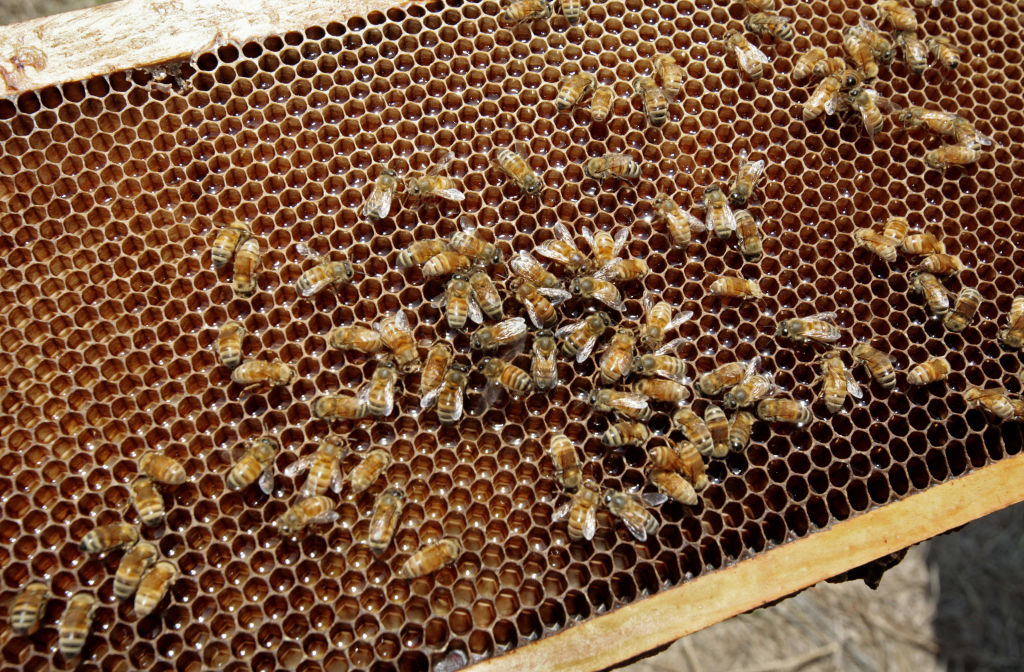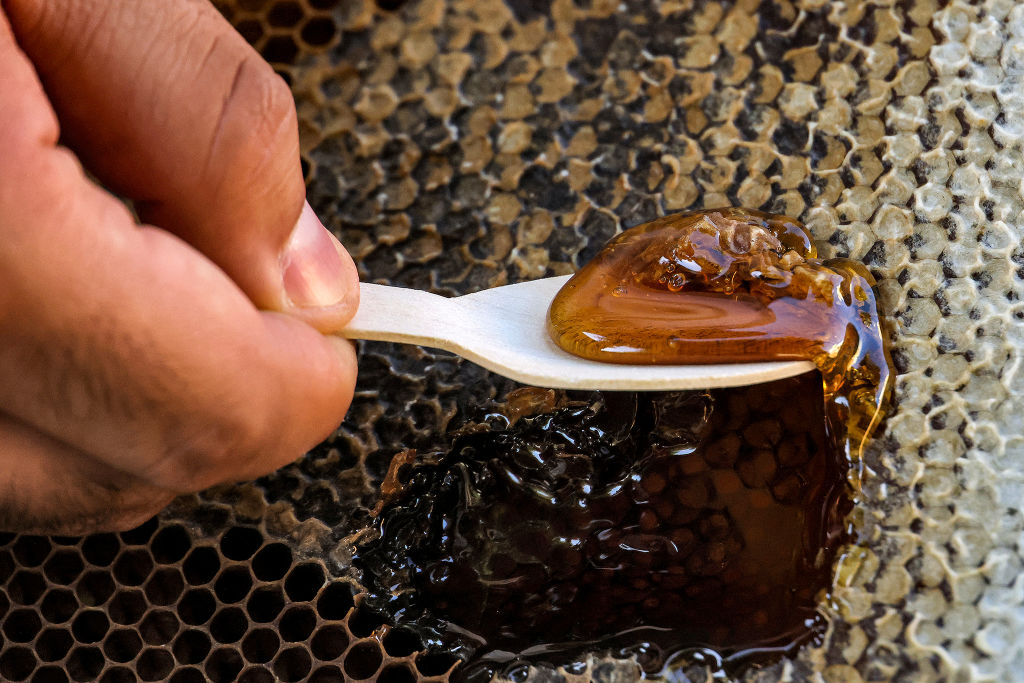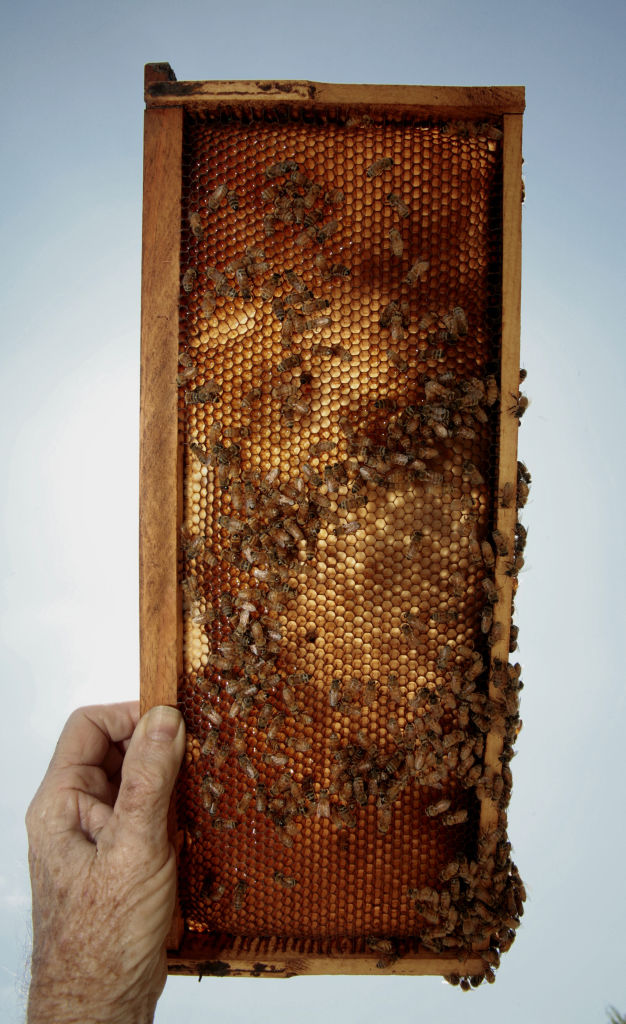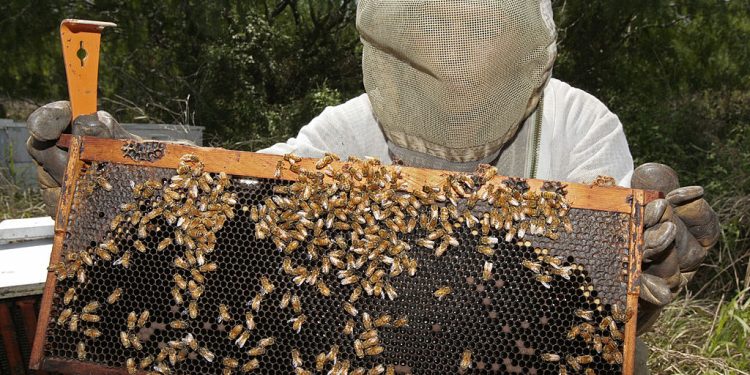
Most people might not think of the Lone Star State as a hub for honey production, but Texas ranks fifth in the U.S., producing 7.4 million pounds of honey in 2019. The state’s interest in commercial beekeeping dates back to Wilhelm Brukish, a German colonist under Prince Carl of Solms-Braunfels, who arrived in Texas in 1842. Brukish introduced the box hive with removable frames, replacing the traditional log gum hive, and authored a book on beekeeping that advanced the practice in the region.
In the 1860s, Italian Queen Bees were imported to Texas, and by 1945, 97% of the state’s bees were from this strain.
For generations, people have harvested honey and used beeswax to make candles. Toward the end of the 19th century, Texas experienced a surge in the bee industry as bees pollinated the state’s abundant wildflowers, which were rich in nectar. This not only supported local wildlife but also helped produce high-quality honey. Recognizing these benefits, the Texas legislature established an apiary at Texas A&M University to promote bee research and beekeeping education. The Texas Beekeepers Association, founded around 1880, held its first meeting at Texas A&M in 1903. Together, they established inspection systems and production guidelines that contributed to the growth of the state’s honey industry.
In 1905, the World’s Fair in France named Uvalde, Texas, the “Honey Capital of the World” due to its impressive honey production in both quantity and quality. In 2019, the first annual Uvalde Honey Festival celebrated the 114th anniversary of this prestigious title. The festival was a great success, drawing renewed attention to the beekeeping and honey industries.

Benefits of Honey:
Honey has been used for centuries across many cultures, and for good reason. Its numerous health benefits range from serving as a natural sweetener to soothing sore throats.
- Rich in antioxidants: Honey contains polyphenols—potent antioxidants similar to those found in fruits, vegetables, tea, and olive oil—that may help reduce the risk of heart disease and cancer.
- Natural antibacterial and antifungal properties: Raw honey contains natural hydrogen peroxide, making it effective in killing bacteria and fungi. It has long been used as a traditional remedy to prevent infections.
- Soothes sore throats: A spoonful of honey can relieve sore throats and act as a natural cough suppressant. When combined with hot tea and lemon, it becomes a popular remedy for colds.

Texas Honey Varieties:
Texas honey comes in a variety of flavor profiles, thanks to the state’s ten distinct plant-life biomes. These biomes are defined by similar climates, soils, plants, and animals, each offering unique terrain and conditions for honey production. For beekeepers, timing is crucial to harvest specific types of honey, but results can vary as honey bees often pollinate a wide range of flowers, sometimes traveling up to six miles when blooms are scarce. Factors like rainfall also affect which flowers bloom and in what quantity, leading to unique honey blends.
Some beekeepers intentionally place their hives near specific plants to harvest distinctive flavors, but in most cases, the flavor profile depends on the available wildflowers. Here are some flavor notes from honey harvested across Texas:
- The Panhandle: Honey from cotton, lavender, and alfalfa in the northern plains has a uniquely sweet and floral flavor.
- East Texas: The region’s wildflowers, goldenrod, and tallow produce full-bodied honey with subtle hints of cinnamon and citrus.
- West Texas: Huajillo and Mesquite produce two distinct types of honey. Huajillo honey is very light with a mild taste and distinctive aroma, while mesquite honey is darker with rich brown sugar undertones.
- Central Texas: Clover and various wildflowers bloom year-round, yielding smooth, buttery honey ranging from light blond in early harvests to darker hues later in the year.
- South Texas: The warmer climate of the Rio Grande Valley produces orange-blossom honey, which is light amber or white with a pronounced citrusy flavor.
Migratory Beekeeping in Texas:
Thanks to the favorable Texas climate, beekeeping in the state is naturally migratory. Many operations are seasonal, focusing on honey production and pollination services. In spring, new colonies are introduced, allowing the bee population to grow during the season. As the colonies expand, they are often divided. When winter approaches, some beekeepers transport their hives to the northern part of the state, often doubling their colonies. Pollination services, however, are primarily concentrated in South and West Texas.
Texas provides a thriving habitat for the beekeeping industry, with most operations located in the central, eastern, and coastal regions of the state. Even during winter, northern operations can continue, as honey bee colonies can survive for up to 4-5 years, even in cold climates. In winter, bees generate warmth within the hive, helping the queen and developing young survive.
In conclusion, Texas’ vast landscapes, diverse plant life, and favorable climate make it an ideal environment for the beekeeping industry. The bees in Texas produce high-quality honey with fascinating and unique flavor profiles. Honey, with its many health benefits, is the perfect natural remedy, especially as the chilly season approaches.
Sources:
BeesWiki Texas Honey: https://beeswiki.com/texas-honey/
Texas honey production tops 7.4 million pounds: https://agrilifetoday.tamu.edu/2020/10/20/texas-honey-production-tops-7-4-million-pounds/
Preserving & Protecting Texas Honey Production: https://www.txfb-ins.com/blog/texas-living/preserving-and-protecting-texas-honey-production






